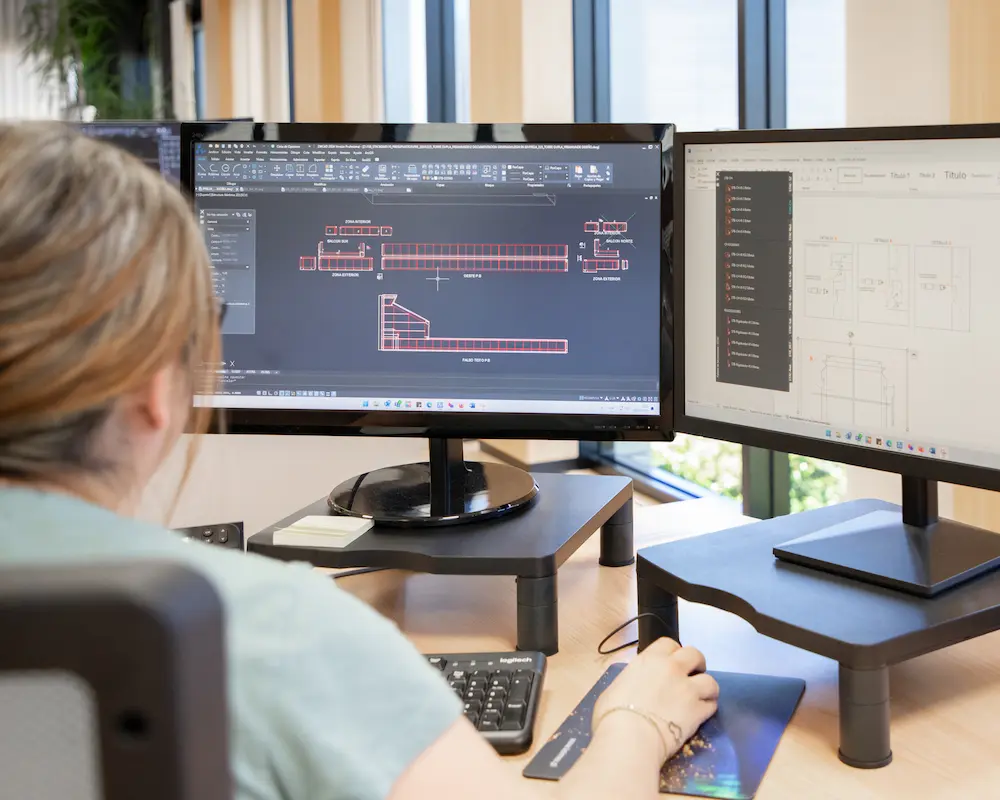Façade design trends for 2025: Innovation, sustainability and technology
Facade design in 2025 will be marked by a combination of technological innovations, sustainability and new aesthetic approaches. These elements will be influenced by the growing need to adapt to environmental challenges, technological advances and energy efficiency. As we approach the future, architects, builders and façadists must be prepared to embrace these trends that will transform the way we view and design our building facades.
Sustainability and energy-efficient materials

Sustainability continues to be one of the fundamental pillars of architectural design. By 2025, buildings are expected to adopt greener and more efficient solutions, with a focus on carbon footprint reduction, material recycling and energy efficiency.
- Recyclable and efficient materials: Aluminum composite panels, such as those from STACBOND, play a key role in being recyclable, offering a sustainable option without compromising durability or aesthetics. Ventilated façade systems improve thermal efficiency, helping to maintain stable temperatures inside the building and reducing energy demand.
- Integrated solar panels: The design of facades incorporating solar panels is becoming an increasingly popular option. These systems allow facades to act not only as enclosures, but also as renewable energy generators, contributing to the building’s energy self-sufficiency.
Digitalization and automation in façade design

Digitization is another major trend that will shape façade design by 2025. 3D modeling and the use of artificial intelligence (AI) are transforming the way facades are designed and fabricated.
- BIM (Building Information Modeling): BIM technologies enable architects to create accurate digital models of buildings that facilitate collaboration and design accuracy. This not only improves construction efficiency, but also makes it easier to customize facades to fit the aesthetic and functional needs of projects.
- 3D printing: In some cases, 3D printing will enable the creation of customized architectural elements for facades, opening up new design possibilities, especially when it comes to complex shapes and patterns.
Aesthetics and customization: a creative facet

In 2025, architects and designers will seek a balance between functionality and aesthetics. Facades will cease to be simply a physical barrier and become creative elements that reflect the building’s identity.
- Innovative textures and custom finishes: STACBOND panels offer a wide range of colors, textures and custom finishes, making it possible to create visually stunning designs. With advanced technology, it is possible to achieve finishes that mimic natural materials, such as wood or stone, but with the durability and ease of maintenance of aluminum.
- Green and vegetal facades: Living facades, which integrate plants and vegetation, will continue to gain popularity. These designs not only improve aesthetics, but also contribute to thermal and acoustic insulation, as well as promoting urban biodiversity.
Well-being and comfort: facades that improve quality of life
Building facades will also be designed with the health and well-being of their occupants in mind.
- Acoustic control: Sound insulation will be a priority to ensure a more comfortable indoor environment. Panels with multilayer structures, such as those from STACBOND, help reduce noise transmission, creating quieter and more pleasant spaces.
- Daylighting: Facades designed to maximize the entry of natural light will have a significant impact on the well-being of occupants. Facades that allow light to pass through without compromising energy efficiency will be in vogue, using translucent materials or smart window systems.
Facade design for 2025 will be marked by a holistic approach combining sustainability, advanced technology and aesthetic creativity. Architects and builders who integrate these trends will be at the forefront of construction, creating more sustainable, efficient and comfortable buildings. In this regard, STACBOND ‘s aluminum composite panels will offer a perfect solution for those seeking a durable, efficient and aesthetically versatile material for their facades.



